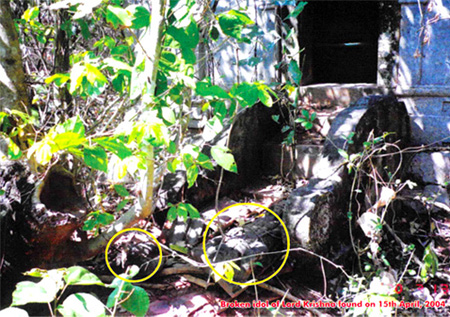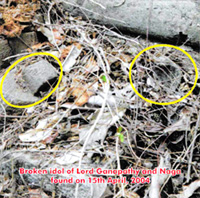History

The new Kulapully Sreekrishna Temple built from the remains of an old temple left uncared for and hidden in the wilderness has become a Symbol of Love Equality and Devotion. As per the astrological predictions the Kulapully Sreekrishna Temple is more than 3000 years old.

The temple was rebuilt in 13th century by Pandya King Maravarman Sundara Pandyan who conquered Cholas and ruled the area.
Kulapully Sreekrishna Temple has been a prominent centre of worship for centuries attracting devotees from all walks of life. During the 18th century the temple was destroyed completely when Tipu Sultan invaded Malabar. Lying without any of the requisite poojas and rituals that are to be performed, the temple slowly fell prey to nature and got consumed by wilderness.
Lord Sreekrishna also called " Hrudaya Nivasi" inspired His staunch devotee Shri Erangodath Prasanna Kumar to recreate the temple and to carry on the daily rituals. Restoration work of the Temple commenced in 2006 and the sacred function of Kumbhabhishekam was performed on 29th April 2007.
Today Kulapully Sreekrishna Temple attracts devotees from all over India. Devotees with heavy hearts and sufferings visit Kulapully Sreekrishna Temple for peace, prosperity, happiness and spiritual upliftment.
Special features of the temple
The temple's main attraction is the captivating idol of Lord Gadaadhara Navaneetha Krishna. The legend is that, the Gopikas desired to see Lord Sreekrishna in His adulthood as Navaneetha Krishna and it is the fulfillment of the desire of the Gopikas that led to Lord carrying butter in His right hand . Believed to be a place of immense significance, this is the only temple in the world where the idol of Lord Gadaadhara Navaneetha Krishna is worshipped.
The upadevathas (subordinate deities) are Goddess Mookambika, Lord Dharma Sastha, Lord Ganapati, Lord Anjaneya, Navagraha, Naga Devatha (Anantha & Naga Lakshmi) and Garuda Bhagavan. The graceful Dharma Sastha carries an Amritha Kalasam (pot of nectar) in His right hand which is also rare to find.
Dress code
For Men: Shirt & Trousers, Dhoti or Pyjama with upper cloth
For Women: Saree with blouse or Chudidar with Pyjama .
Dress Modestly and opt for a comfortable dress that covers your body

